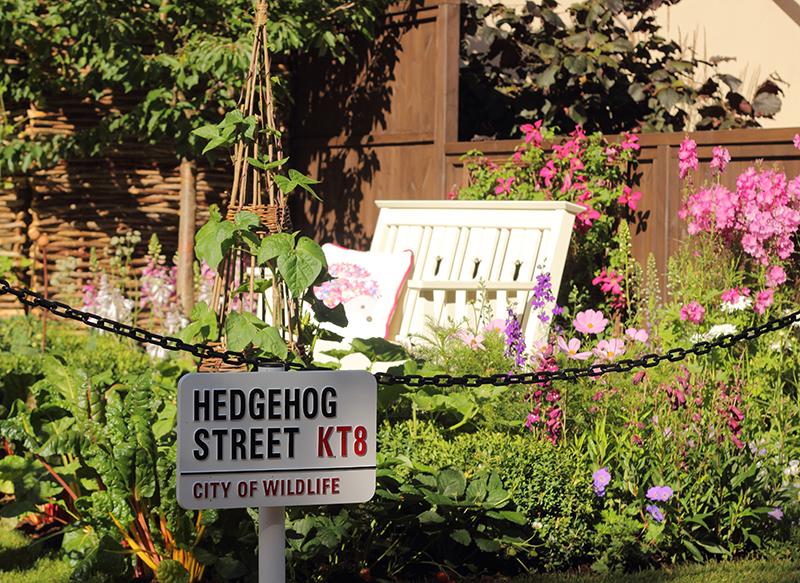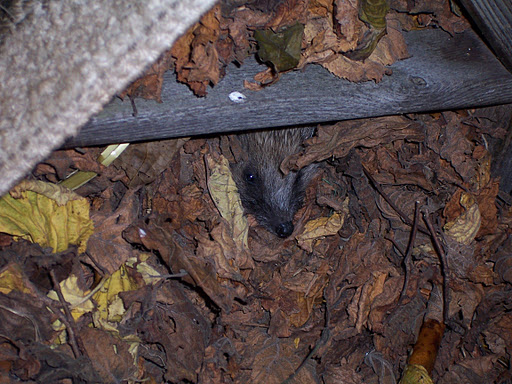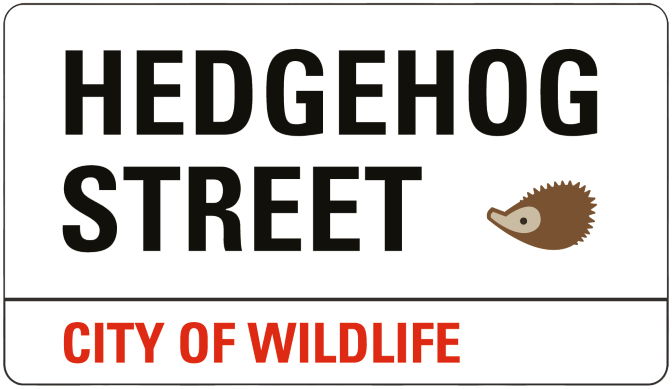Hedgehogs in urban gardens
Habitat fragmentation is a big issue
The increasing use of impenetrable fencing around gardens, which reduces the movement of hedgehogs between gardens, has almost certainly lead to fragmentation of urban hedgehog populations and is likely to have contributed to declining numbers.
Tidiness in gardens and green space
It is a myth that your garden has to be a complete jungle to be wildlife-friendly
The key, and this is true for hedgehogs especially, is that you need to try and incorporate as many features into the garden as possible. Most of these can be made to work in a really formal garden just as well as an informal one, as exemplified by our garden at RHS Hampton Court Flower Show.

Hedgehogs like lawns for foraging, compost heaps and wood piles for nesting, nectar-rich plants for insect food, deciduous leaves for building nests…the list goes on. Over tidiness can destroy some of these features. One specific example could be that if you cut back all your plants every autumn, many insects need standing vegetation to overwinter in, so you will be directly reducing the amount of hedgehog food in your garden. Fortunately, some plants look great over winter, so adjust your planting to your taste.

Chemicals are bad news for hedgehogs
Pesticides reduce the amount of invertebrates available for the hedgehogs to eat in gardens.
In 2022 metaldehyde slug pellets were banned. It is now illegal to sell, supply, store or use metaldehyde products. However there are still many garden chemicals which could cause direct or indirect harm to hedgehogs. It is always best to opt for a natural solution over chemical use.
Herbicide use on lawns also reduces the availability of earthworms, one of the main hedgehog prey items.
Roads kill hedgehogs, and disrupt their movements
Roads can have an impact on hedgehogs through direct mortality. In the UK it has been estimated that up to 100,000 hedgehogs are killed annually on roads. Roads also act as barriers to movement of hedgehogs, causing the fragmentation of populations into smaller populations which are more likely to become extinct.
Traffic volume can have a larger impact on population persistence than road size, as traffic volume increases a road becomes more difficult to cross and so it prevents any movement of hedgehogs.
Development: missed opportunities
The impact of new housing developments is complex. They can have negative consequences for hedgehogs if they destroy habitat. On the other hand, gardens can support very high densities of hedgehogs, just as long as gardens are connected.
Sadly this simple provision is still rarely made in new developments, but there is real opportunity to change this. Larch lap and gravel board fencing systems are a big issue and they are often used in new build constructions. There are simple solutions currently being investigated which would allow hedgehogs to move freely between gardens.

